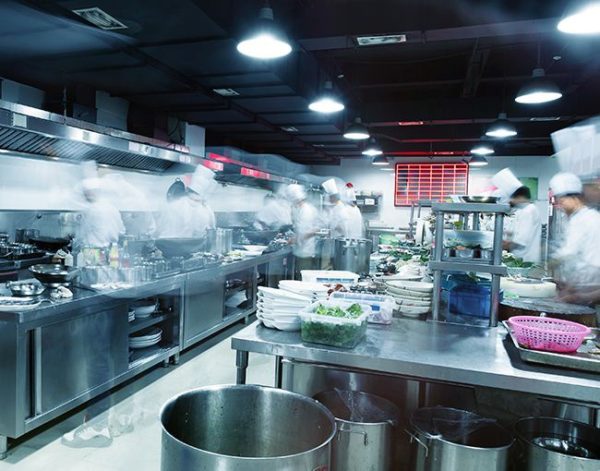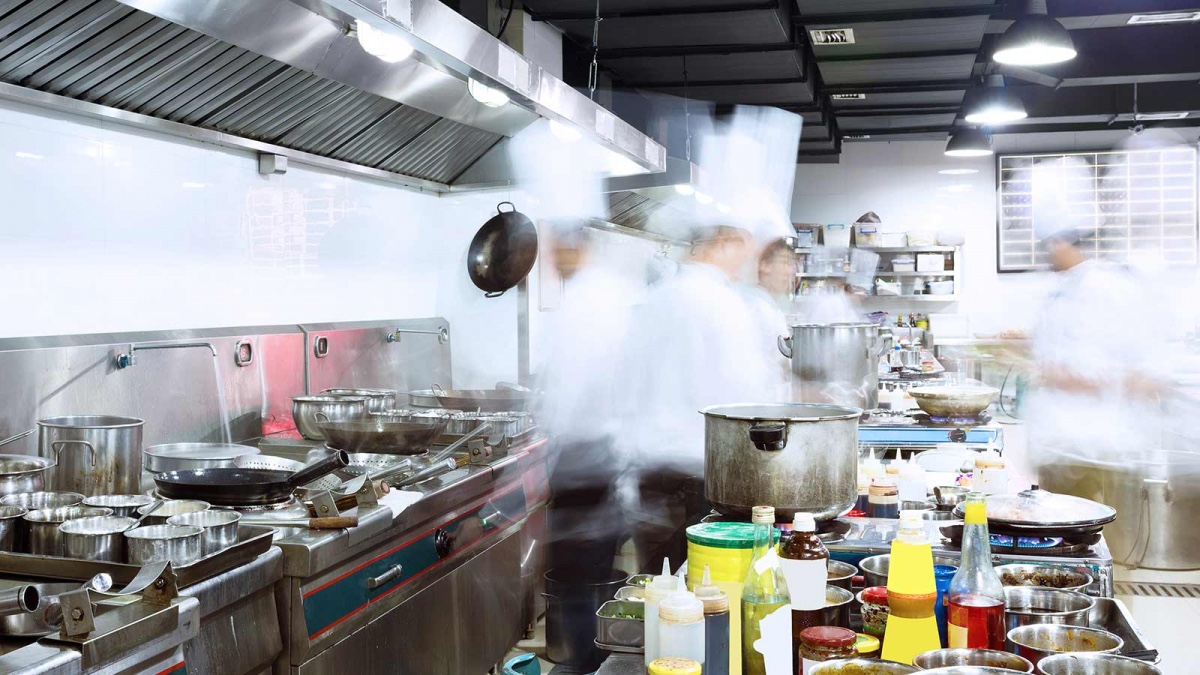The pandemic hasn’t stopped the affable and beloved restaurant everyman Guy Fieri from installing outposts of his new plug-and-play restaurant, Flavortown Kitchen, in cities all over the country. In just a matter of weeks, the Mayor of Flavortown and his associates have co-opted 100 vacant kitchens and transformed them into delivery-only restaurants featuring bro-forward menus of artery-clogging Fieri favorites like “Mac Daddy” Mac-and-Cheese, Jalapeño “Pig Poppers,” and, of course, his signature Donkey Sauce. The parent company, Virtual Dining Concepts, plans to grow its footprint to 500 stores over the next few years.
Given the meteoric rise of these so-called “ghost kitchens,” one wonders whether this trend of virtual dining has staying power after the pandemic threat subsides. Covid-19 has accelerated the ways that restaurants rely on technology to run more efficiently. It’s also exposed how vulnerable smaller restaurants are to the tyranny of third-party delivery apps and payment processors.
Mr. Fieri is hardly to blame for this trend. In his defense, he’s been an outspoken advocate for the restaurant industry since the pandemic began. His charitable foundation has raised tens of millions of dollars to provide relief for unemployed restaurant workers. According to Fieri, the rollout of Flavortown Kitchen was driven by his desire to support struggling restaurants that are temporarily closed or underutilizing their space.

The pandemic has forced many independent restaurant owners and chefs to abandon their foundational concepts. Out of necessity, they’ve focused more on delivery and take-out, merchandising to-go cocktails, managing curbside pickup, and facilitating contactless transactions. But now those businesses have to compete with a new flock of virtual restaurants that may offer similar products but with considerably lower overhead.
This is one of the many inherent advantages that ghost kitchens have over brick-and-mortar restaurants. They eliminate the need to procure costly and visible storefronts that drive foot traffic. With more space designated for food preparation, they’re able to more easily achieve scale.
Ghost kitchens eschew the exhibitionist trend that’s defined dining out over the last decade. The popularity of open kitchens in the early Aughts lured diners into the spectacle of cooking in a way that fostered an insatiable hunger for access. Social media turned that peckishness into carnal lust.
Concealing the kitchen is a worthwhile sacrifice for these cloud businesses in order to capitalize on a restaurant’s greatest liability. A restaurant’s kitchen often consumes up to a quarter of the physical space, surface area that can’t be used to generate revenue from paying customers. The fact that tables are so tightly packed in bustling big-city restaurants is usually borne out of necessity. They need to overcompensate for the fact that they can’t seat anyone in the area designated for cooking.
You may not have noticed it, but restaurant kitchens have been steadily shrinking over the years. Kitchen staffs have gotten smaller, too. Not only to curtail labor costs, but also to manage spatial constraints that make it impossible to fit more bodies behind the line. Every cook today is doing the job of three cooks in yesterday’s industry. When the pandemic dissipates, kitchens will become even smaller, and an already overworked kitchen staff will be stretched even more thin.
Right now, though, the Covid-19 crisis has left a dearth of dormant kitchen spaces in hotels, defunct restaurants and clubs that cannot legally open or can only operate under limited capacity. After abruptly filing for Chapter 11 bankruptcy last year, the parent company of Chuck E. Cheese turned many of its dark kitchens into Pasqually’s Pizza, a delivery-only virtual restaurant.
Venture capitalists and tech entrepreneurs have seized the opportunity to find ways of monetizing vacant restaurants. Kitsch, a New York-based company that bills itself as a “kitchen matchmaker,” wants to be known as the “AirBnB for commercial kitchens” by connecting food entrepreneurs with off-site facilities to prepare food. Travis Kalanick, the much-maligned founder of Uber, recently invested $120 million in CloudKitchens, a ghost kitchen startup with aggressive plans for expansion.
According to a New Yorker article published earlier this year, Uber Eats has already facilitated delivery from 7,000 virtual kitchens worldwide, 4,000 in North America alone. Tech companies like Uber leverage troves of data about their customers’ food preferences with a level of granularity that these restaurants could never achieve on their own. This encourages restaurateurs to open off-premise kitchens with curated menus geared toward those proven preferences.
As we’ve learned, these third-party services are adept at creating efficiencies, but their onerous terms can also be oppressive to smaller restaurant owners. There are hidden costs to filtering our consumption through a middleman that picks the pockets of both parties before the doorbell rings.

During the pandemic, technology has become indispensable for human connection, but it’s also made these connections more opaque. The same could be said about the relationship we have with our food and its purveyors. In the way that reliance on social media and video conferencing has created a barrier to social interactions, there’s a real risk that ghost kitchens drive a deeper wedge in between us and our meals.
In today’s world, everything is streamable. Food is no exception. Everything we could possibly want to eat is always just a tap or click away. The digital experience is even designed to feel like your delivery order is “downloading” with intermittent messages that keep customers abreast of the status of their order.
These platforms are able to aggregate data and design algorithms to keep customers locked into their ecosystems. Mobile apps like GrubHub and DoorDash can recommend dishes based on your order history and upsell you add-ons before you check out. The goal of these services is to make these transactions as effortless as possible, prioritizing convenience and consistency. This is markedly different from the aspirations of seated, full-service restaurants that strive to be both engaging and delicious.
Restaurants are the nervous centers of their communities, interwoven together they create a patchwork of a city’s history. Imagine New York City without Katz’s Deli, Sylvia’s, or Peter Luger’s. Iconic restaurants, easily identifiable by their facades, like these define a city’s identity and carry its rich history with them. Aren’t these places flavorful enough without Flavortown moving into the neighborhood?
Unfortunately, the corpses of many deceased independent restaurants will likely be exhumed by corporate chains and reincarnated as Applebee’s, Cheesecake Factory or Texas Roadhouse. Just as we’ve experienced with the extinction of so many beloved small retailers across the country that have been subsumed by our online shopping habits, physical restaurant spaces, especially the neighborhood variety, face a similar existential threat. The traditional business model of a restaurant isn’t sustainable anymore. If we don’t do something to reverse the trend soon, our communities won’t only have ghost kitchens, they’ll become ghost towns.


Great article. Very good explanations. Great knowledge.